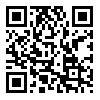Sat, Apr 5, 2025
[Archive]
Volume 19, Issue 5 (Suppl- 2021)
IJRM 2021, 19(5): 224-224 |
Back to browse issues page
Download citation:
BibTeX | RIS | EndNote | Medlars | ProCite | Reference Manager | RefWorks
Send citation to:



BibTeX | RIS | EndNote | Medlars | ProCite | Reference Manager | RefWorks
Send citation to:
Pourentezari M, Dehghan M, Ashoorzadeh S, Talebi AR. P-57 Effect of one-way blunt testis on sperm parameters in acute and chronic periods after injury in mice. IJRM 2021; 19 (5) :224-224
URL: http://ijrm.ir/article-1-2856-en.html
URL: http://ijrm.ir/article-1-2856-en.html
1- Anatomy Department, Faculty of Medical Sciences, Tarbiat Modares University, Tehran, Iran. , m.pourentezari@gmail.com
2- Department of Biology and Anatomical Sciences, Shahid Sadoughi University of Medical Sciences, Yazd, Iran.
3- Afzalipour Clinical Center for Infertility, Kerman University of Medical Sciences, Kerman, Iran
4- Department of Biology and Anatomical Sciences, Shahid Sadoughi University of Medical Sciences, Yazd, Iran. Department of Reproductive Biology, Research and Clinical Center for Infertility, Shahid Sadoughi University of Medical Sciences, Yazd. Iran.
2- Department of Biology and Anatomical Sciences, Shahid Sadoughi University of Medical Sciences, Yazd, Iran.
3- Afzalipour Clinical Center for Infertility, Kerman University of Medical Sciences, Kerman, Iran
4- Department of Biology and Anatomical Sciences, Shahid Sadoughi University of Medical Sciences, Yazd, Iran. Department of Reproductive Biology, Research and Clinical Center for Infertility, Shahid Sadoughi University of Medical Sciences, Yazd. Iran.
Abstract: (186 Views)
Background: So far, the effects of blunt trauma on sperm parameters and reproductive capacity have not been firmly established and diverse reports have been presented.
Objective: The aim of this study was to investigate the effect of unilateral blunt testis on sperm parameters in acute and chronic periods after injury in mice.
Materials and Methods: In this study, 40 adult male NMRI mice with a weight of 35-30 gram were selected randomly and divided into 3 groups: control, sham (Mice in this group were only surgically treated) and experimental (Mice were surgically treated in this group and the blunt was hit by their left testes). Sampling was performed in two acute (48 hours after surgery) and chronic (1 month and 2 months after surgery), after anesthesia the tail of epididymis was separated and placed in Ham's F10 solution. Then sperm samples were examined microscopically in terms of motility, number (with 40x lens), viability (eosin stain color and hypoosmotic swelling).
Results: In the case of rapid sperm motility, the control group with acute experimental, one and two month chronic, acute sham group with sham one month, acute and chronic experimental one and two months, and sham group two months with acute experimental groups and sham one and two months were significant. Regarding the sperm viability, the control group with one month acute and chronic sham, the acute sham group with one month sham groups, an acute and chronic one month experimental, and a one month chronic group with acute and chronic two month experimental groups were significant. Regarding sperm count, a one month chronic group with control groups, acute sham, one to two months sham and an acute experimental with one month chronic group was significant.
Conclusion: The testicular blunt has affected sperm parameters. In other words, the mean number of sperm (ml /ml) and the percentage of sperm survival and motility (progressive, non-progressive, and inactivity) were significant between the control and sham groups and the experimental group, which was not effective on fertility.
Objective: The aim of this study was to investigate the effect of unilateral blunt testis on sperm parameters in acute and chronic periods after injury in mice.
Materials and Methods: In this study, 40 adult male NMRI mice with a weight of 35-30 gram were selected randomly and divided into 3 groups: control, sham (Mice in this group were only surgically treated) and experimental (Mice were surgically treated in this group and the blunt was hit by their left testes). Sampling was performed in two acute (48 hours after surgery) and chronic (1 month and 2 months after surgery), after anesthesia the tail of epididymis was separated and placed in Ham's F10 solution. Then sperm samples were examined microscopically in terms of motility, number (with 40x lens), viability (eosin stain color and hypoosmotic swelling).
Results: In the case of rapid sperm motility, the control group with acute experimental, one and two month chronic, acute sham group with sham one month, acute and chronic experimental one and two months, and sham group two months with acute experimental groups and sham one and two months were significant. Regarding the sperm viability, the control group with one month acute and chronic sham, the acute sham group with one month sham groups, an acute and chronic one month experimental, and a one month chronic group with acute and chronic two month experimental groups were significant. Regarding sperm count, a one month chronic group with control groups, acute sham, one to two months sham and an acute experimental with one month chronic group was significant.
Conclusion: The testicular blunt has affected sperm parameters. In other words, the mean number of sperm (ml /ml) and the percentage of sperm survival and motility (progressive, non-progressive, and inactivity) were significant between the control and sham groups and the experimental group, which was not effective on fertility.
Type of Study: Congress Abstract |
Subject:
Pregnancy Health
Send email to the article author
| Rights and permissions | |
 |
This work is licensed under a Creative Commons Attribution-NonCommercial 4.0 International License. |




